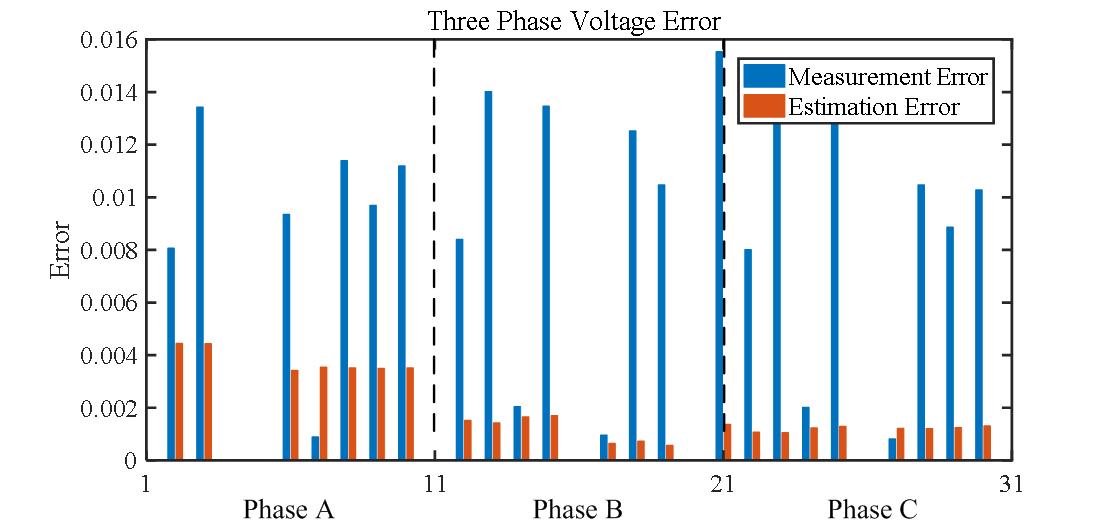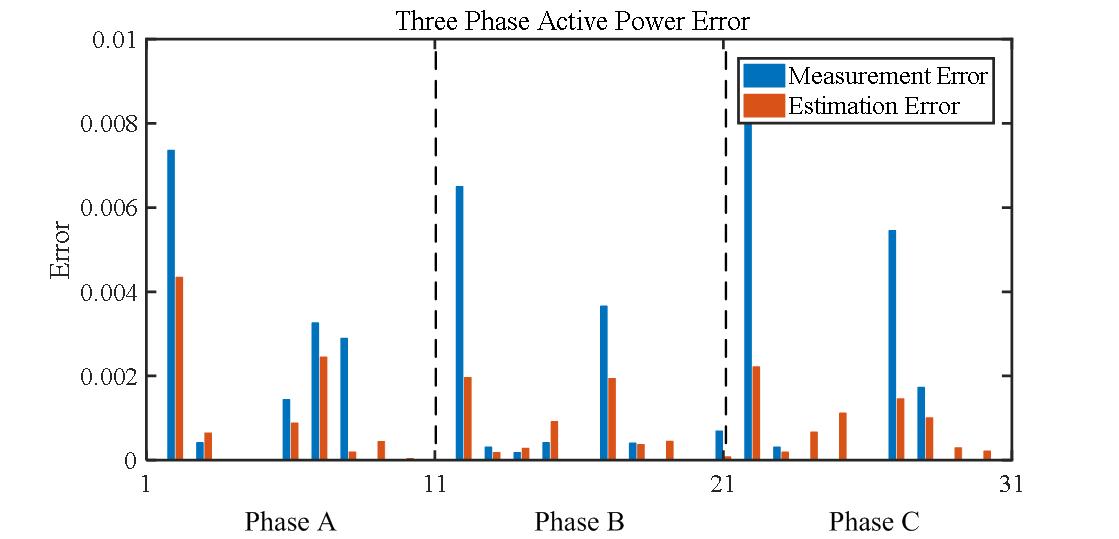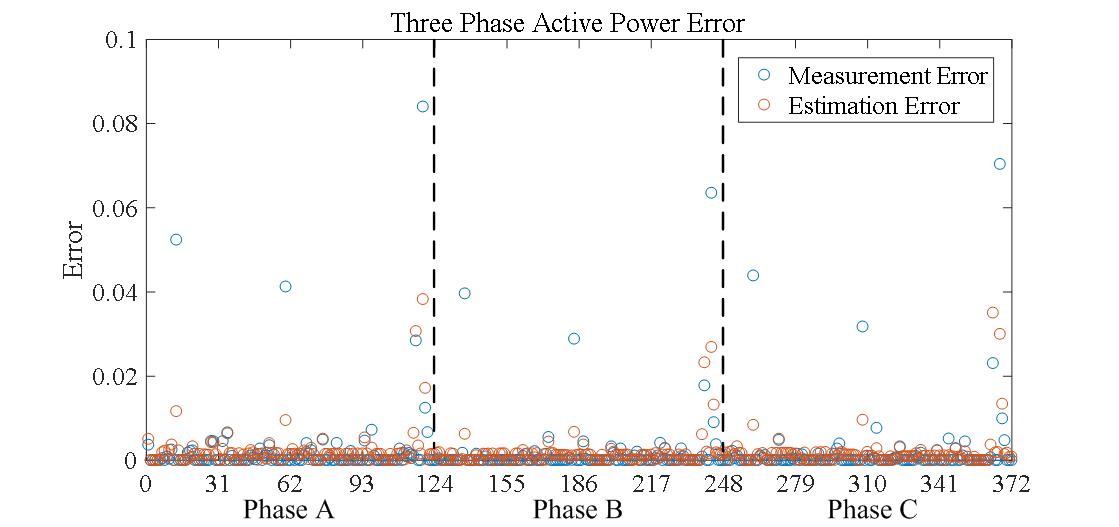Several studies have been conducted based on historical data from the As a fundamental function of Distribution Management System, state estimation can provide a technique to determine the most likely state of the system during operation by making use of available measurements. Although state estimation (SE) in transmission level has been studied for decades of years, it is not easy to directly apply transmission SE method to distribution level because of the different features in distribution system, especially the unbalanced, asymmetrical, three-phase characteristics, as well as the use of low accuracy pseudo measurements. This research focused on distribution level state estimation (DSE) considering three phase unbalanced parameters and unbalanced loads. The actual measurements include voltage magnitude, flow measurement and injection measurement. Also, virtual and pseudo measurements are used to increase the system observability and the state estimation accuracy. State variables are defined as the real and imaginary parts of the complex node voltages. Different from state estimation programs for transmission system, the DSE model will be able to handle a three-phase system with asymmetrical topology and unbalanced loads. Case studies are carried out in IEEE 13 node radial distribution test feeder and IEEE 123 node feeders. It can be seen from Fig. 1 to Fig. 4 that the measurement error is effectively reduced by state estimator.

Fig. 1. Measurements and estimation error of voltage in IEEE 13 node system

Fig. 2. Measurements and estimation error of active power in IEEE 13 node system

Fig. 3. Measurements and estimation error of voltage in IEEE 123 node system

Fig. 4. Measurements and estimation error of active power in IEEE 123 node system


